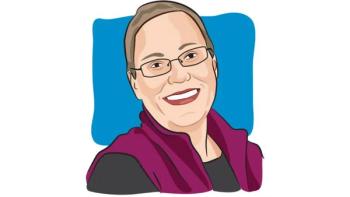
WHO Publishes New Cervical Cancer Guidelines
Pap tests should be replaced by more accurate HPV DNA tests, the organization says.
The World Health Organization (WHO) and Human Reproduction Programme (HRP) published new screening and treatment recommendations today to prevent cervical cancer in women around the globe.
While cervical cancer is
The global strategy states that 70% of women should be screened for cervical cancer via high-performing test. The test that WHO recommends is a human papillomavirus (HPV) DNA-based test, not a visual inspection with acetic acid, or Pap smear, which are more common. The HPV DNA test is not only more accurate, but it is also more cost-effective, according to WHO.
Additionally, WHO recommends more access to self-sampling (and the necessary commodities to support it) to achieve the goal of having 70% of women tested by 2030.
The hope is that at least 90% of people who need treatment receive it. This, paired with screening women against HPV, may help prevent more than 62 million deaths from cervical cancer in the next century.
“Effective and accessible cervical screening and treatment programmes in every country are non-negotiable if we are going to end the unimaginable suffering caused by cervical cancer,” said Dr. Princess Nono Simelela, Assistant Director-General for Strategic Programmatic Priorities: Cervical Cancer Elimination. “
WHO also states that more emphasis needs to be made on the link between HPV and HIV, as women with HIV are six times more likely to get HPV than those without HIV. Considering that HPV is the main driver behind most cervical cancer diagnoses, this correlation cannot be overlooked. WHO recommends that women with HIV start cervical cancer screening at an earlier age (25 years, versus the general population recommendation of 30 years) and more frequently.
“With these new guidelines, we must leverage the platforms already developed for HIV care and treatment to better integrate cervical cancer screening and treatment to meet the health needs and rights of the diverse group of women living with HIV to increase access, improve coverage, and save lives,” said Dr. Meg Doherty, Director of WHO’s Department of Global HIV, Hepatitis and Sexually Transmitted Infections Programmes.
Finally, all women who test positive for cervical cancer should receive treatment soon after diagnosis. This is more difficult in countries with significant barriers to care.
“Cost-effectiveness of screening tests is important for scaling up programmes, but other aspects of the public health approach to eliminating cervical cancer are also vital,” said Dr. Nathalie Broutet, WHO Department of Sexual and Reproductive Health and Research and HRP. “What matters most is the coherence of every country’s programme in ensuring the continuum of care: that all women have access to screening, health care providers are informed in a timely manner about the results of the screening test and can in turn share this information with their client, and that women can access appropriate treatment or referral if needed.”
For more news on cancer updates, research and education, don’t forget to





